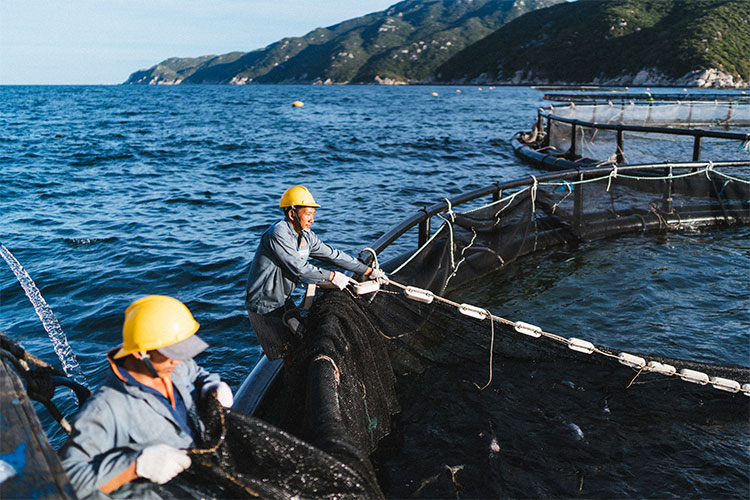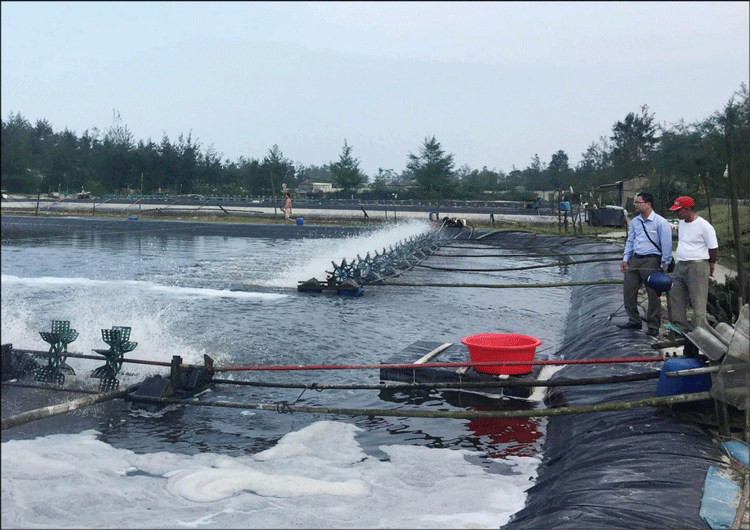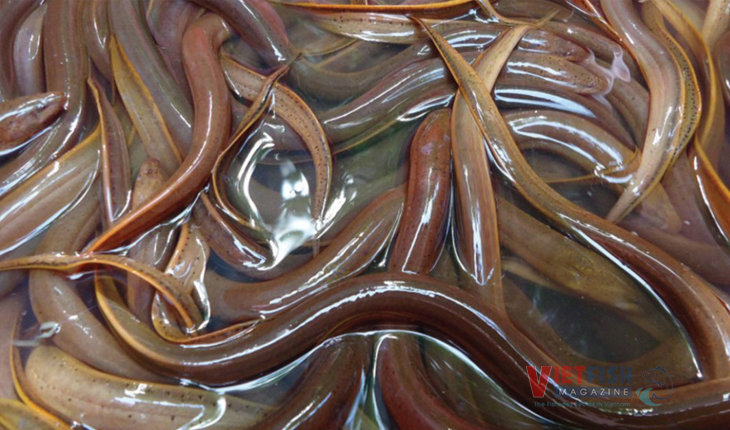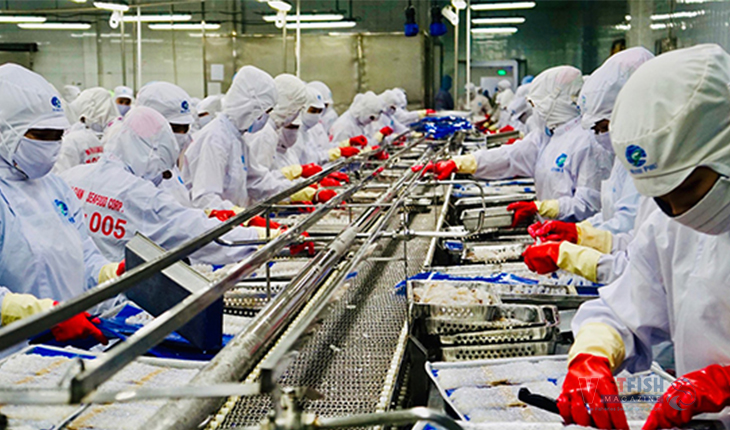Khanh Hoa pioneers offshore aquaculture using HDPE cages
In a significant milestone for Vietnam’s marine aquaculture industry, a household in Cam Lam district, Khanh Hoa province has become the country’s first to deploy high-tech fish farming cages more than six nautical miles offshore.
First household to farm at sea, 6 nautical miles from shore
The family of Vo Lam Dong and Luong Thi Kim Thoa, based in Cam Duc town, recently transported 2,000 juvenile golden pompano to their offshore farming site near Hon Noi. Setting off early in the morning, they carefully loaded the fingerlings onto a boat destined for the newly established sea cages.

“We come from a fishing family and were inspired by successful marine farming models in Cam Lap and Van Phong Bay. When Cam Lam district launched its high-tech sea farming initiative with support from the Thien Tam Fund (Vingroup), we eagerly signed up,” said Thoa. “This initial batch consists of 2,000 fish in square nursery cages, and we plan to transfer another 5,000 fingerlings soon. As the fish grow, they will be moved into round production cages.”
After a 75-minute journey over choppy waters, the team reached the offshore site where state-of-the-art round and square cages had been installed. Unlike traditional nearshore setups using wooden rafts, barrels, and foam buoys, this offshore area is equipped with durable HDPE cages designed to withstand open-sea conditions.
A total of 20 round cages (800m³ each) and two square cage clusters comprising 16 nursery units have already been deployed. The cages feature reinforced structural designs, triple-ring floats, integrated frames, stronger mesh bags, and robust anchoring systems tailored to high-current and wave-exposed environments.
Smart monitoring in extreme conditions
“We’re proud to be the first household in Vietnam to farm fish six nautical miles offshore using HDPE cages,” said Dong. “These cages are proven to endure rough seas and offer better water quality. They’re also equipped with smart monitoring systems, including surveillance cameras, GPS tracking, salinity and pH sensors, DO and temperature monitors, all linked to smartphones for real-time oversight, especially useful during storm season.”
Ten households from Cam Ranh are currently raising fish and lobsters in the same area, with additional cages set for deployment. Nearby families are also preparing to scale up, and optimism is high among the local farming community.
Expanding the model across the province
These efforts are part of a broader expansion supported by the Thien Tam Fund, which aims to help 70 households adopt offshore aquaculture by 2025, following the initial success in Cam Lap. The model is now being extended beyond the three-nautical-mile mark across various coastal districts.
HDPE cage farming is already being combined with tourism in Dam Bay, while open-sea clusters have been established 3 – 6 nautical miles off Hon Noi. Similar initiatives are underway in Van Ninh and Ninh Hoa, forming a foundation for Khanh Hoa’s high-tech marine farming strategy.
Dong emphasized the need for a dedicated pier to ease daily commutes to the remote site, where farmers must travel back and forth to feed and monitor stock. He also called for additional government support in securing aquaculture permits, designated sea areas, and insurance for offshore labor and farming assets.
Policy support and streamlined licensing
Nguyen Trong Chanh, Deputy Director of the Department of Agriculture and Environment, said the province is actively developing criteria to classify cage systems by technology level, regional suitability, and storm resistance. These standards will guide the development of offshore aquaculture across Khanh Hoa.
The department is also proposing financial assistance for farmers transitioning from traditional to HDPE cages and helping cover accident insurance costs for offshore workers. Plans are underway to establish cooperative groups for high-tech sea farming and to streamline licensing processes, cutting approval times by 50% for qualified households and businesses.
For the Hon Noi site specifically, the Thien Tam Fund plans to build a community pier and provide a large transport vessel to facilitate travel between land and sea cages.
These efforts signal a transformative shift in Vietnam’s aquaculture sector, paving the way for resilient, high-tech farming in offshore waters.
VFM






